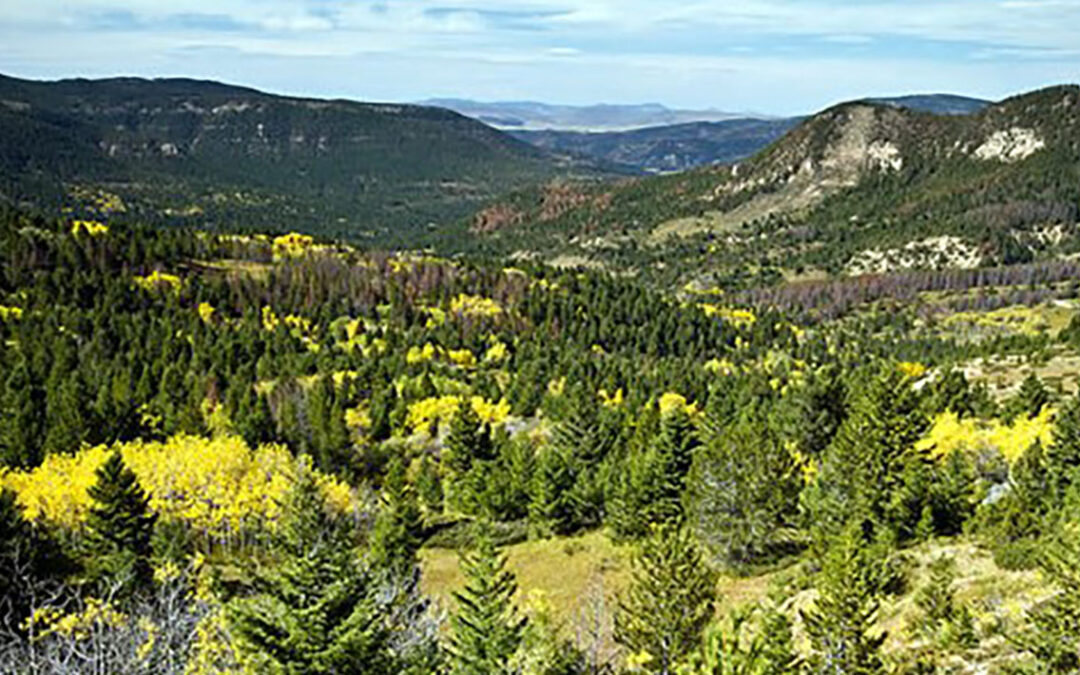Photo: USFS
The Alliance for the Wild Rockies and Native Ecosystems Council filed their lawsuit to stop the Horsefly project in the Helena-Lewis and Clark National Forest in April 2021. The project called for cutting and burning trees on 10,343 acres, which is more than 16 square miles. To enable the logging, the agency planned on bulldozing a stunning 40.7 miles of new logging roads in the Little Belt Mountains north of White Sulphur Springs, Montana.
The scope of the massive Horsefly landscape-altering proposal is alarming and because the project violated federal law, it had to be enjoined.
The Forest Service used a number of euphemisms in a transparent attempt to disguise what used to be more honestly called logging. For instance, the agency called 3,278 acres of commercial logging ‘intermediate treatment,’ 1,049 acres of clearcutting ‘regeneration harvest,’ 409 acres of clearcutting and possible burning ‘meadow restoration,’ and 465 acres of non-commercial logging ‘rearrangement of fuels’. They’re ‘rearranging’ them alright: from forest ecosystems to stump fields.
This is an ecosystem, not a private tree farm, and so we have to maintain the habitat for sensitive wildlife species. One of those species is the northern goshawk, which has been declining in population, and which the forest plan lists as an old-growth forest management indicator species. Due to the importance of this species, the law requires 100% of goshawk nets to be monitored annually.
In 2018, the entire Forest was surveyed for goshawks and the Forest Service found an alarming 47% decline in active goshawk nests, which the agency failed to disclose to the public in violation of the National Environmental Policy Act and the National Forest Management Act. The agency also ignored its own Forest Plan requirement to issue an evaluation report if active nests decline by 10%.”
The Court’s ruling was very straightforward on the failure of the Forest Service to follow the law. As the Order reads: “The Court agrees with Alliance that the Forest Service’s failure to disclose and evaluate the decline in active goshawk nesting territories violated both NFMA and NEPA. . . . Federal Defendants all but concede that the Forest Service’s failure to disclose the decrease in active goshawk nesting territories to the public in the EA and failure to comply with the Forest Plan requirement to conduct an evaluation report if active nests decline by 10% amounts to a violation of NFMA.” Yet the Forest Service continues to log the last remaining mature and old growth forests and goshawks are in trouble.
The Court’s order remanded the project authorization to the agency, and enjoined the project pending compliance with federal law. We follow the law every day, and the Forest Service must also follow the law. When a government agency violates the law, it must be held accountable in court. It’s not easy to fight the federal government, which has far more resources than we do, but nonetheless we are committed to making the government follow its own laws to protect our native wildlife and public land ecosystems. Despite attacks by politicians, intimidation tactics, and misinformation campaigns, we won’t be stopped. We are determined to continue with this critical work.
You can view the court order here: Horsefly sj order filed 6.27.24
Please consider helping us continue to fight to protect old growth forests and make the Forest Service follow the law.
Mike Garrity is the Executive Director of the Alliance for the Wild Rockies
